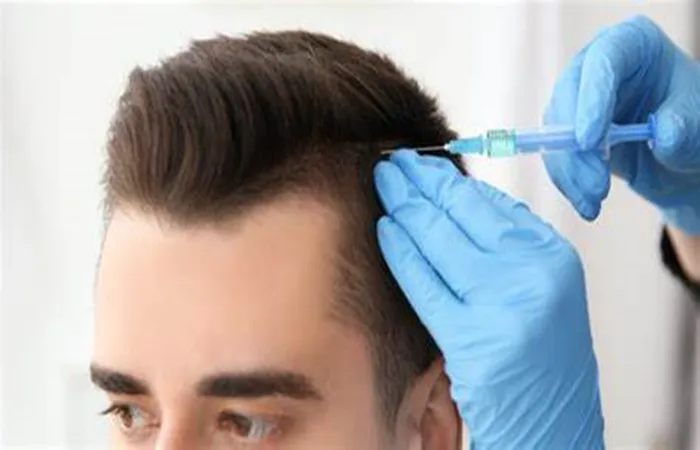A bad hairline can be a source of frustration and self-consciousness for many people. Whether your hairline is receding, uneven, or simply not as full as you’d like, there are steps you can take to improve its appearance.
In this article, we’ll explore the causes of a bad hairline, the available treatment options, and how to choose the best approach for your needs. We’ll use simple sentences and logical explanations to make this topic easy to understand.
What is a Bad Hairline?
A bad hairline refers to a hairline that is uneven, receding, or thinning. It can be caused by genetics, aging, hormonal changes, or other factors. A bad hairline can affect both men and women, though the causes and treatments may differ.
Common Causes of a Bad Hairline
Understanding the cause of your bad hairline is the first step in finding the right solution. Here are some common causes:
Genetics
If your parents or grandparents had a receding or uneven hairline, you may be more likely to experience the same.
Aging
As we age, hair growth slows down, and hair follicles may become less active, leading to thinning or recession.
Hormonal Changes
Hormonal fluctuations, such as those caused by pregnancy, menopause, or conditions like polycystic ovary syndrome (PCOS), can affect the hairline.
Traction Alopecia
Tight hairstyles, such as ponytails, braids, or extensions, can pull on the hairline and cause damage over time.
Stress and Illness
Physical or emotional stress, as well as certain illnesses, can lead to temporary hair loss, including along the hairline.
Nutritional Deficiencies
A lack of essential vitamins and minerals, such as iron, biotin, or vitamin D, can affect hair health.
What to Do If You Have a Bad Hairline
If you’re unhappy with your hairline, there are several steps you can take to improve its appearance. Here are the most effective methods:
Consult a Specialist
The first step in addressing a bad hairline is to consult a hair restoration specialist. They can evaluate your scalp, diagnose the cause of your hairline issues, and recommend the best treatment options.
Topical Treatments
Topical treatments are applied directly to the scalp and can help stimulate hair growth.
Minoxidil (Rogaine): Minoxidil is an FDA-approved topical treatment for hair loss. It works by increasing blood flow to the scalp and stimulating hair follicles. It is available over the counter and can be used by both men and women.
Prescription Topicals: Some people may benefit from prescription-strength topical treatments that contain ingredients like corticosteroids or anti-androgens.
Oral Medications
Oral medications can help address hormonal or nutritional causes of hair loss.
Finasteride (Propecia): Finasteride is an oral medication that blocks the hormone DHT, which contributes to hair loss. It is primarily used by men but may be prescribed off-label for women.
Spironolactone: This medication is often prescribed for women with hormonal hair loss, such as those with PCOS. It helps reduce androgen levels, which can contribute to hair thinning.
Nutritional Supplements: Supplements containing biotin, iron, zinc, and vitamin D can support hair health and growth.
Low-Level Laser Therapy (LLLT)
Low-level laser therapy uses light to stimulate hair follicles and promote growth. It is a non-invasive treatment that can be done at home or in a clinic.
How It Works: LLLT devices emit red or near-infrared light, which penetrates the scalp and stimulates cellular activity in the hair follicles.
Platelet-Rich Plasma (PRP) Therapy
PRP therapy is a popular treatment for hair restoration that uses the patient’s own blood to stimulate hair growth.
How It Works: A small amount of blood is drawn and processed to concentrate the platelets. The platelet-rich plasma is then injected into the scalp, where it promotes healing and stimulates hair follicles.
Benefits: PRP is a natural and minimally invasive treatment with no downtime.
8. Lifestyle Changes
Making healthy lifestyle choices can support hair health and prevent further hairline recession.
Diet: Eat a balanced diet rich in vitamins, minerals, and protein to support hair growth.
Stress Management: Practice stress-reducing activities like yoga, meditation, or exercise.
Gentle Hair Care: Avoid tight hairstyles, heat styling, and harsh chemicals that can damage the hairline.
Conclusion
A bad hairline doesn’t have to be a permanent problem. With the right treatment and care, you can improve the appearance of your hairline and regain your confidence. Whether you choose topical treatments, PRP therapy, or hair transplant surgery, there are solutions to help you achieve the look you desire. If you’re unsure where to start, consult a hair restoration specialist for personalized advice and guidance. Remember, a healthy and beautiful hairline is within reach!
Related topics:
How to Restore Your Hairline: A Comprehensive Guide
What’ the Difference Between FUT and FUE?
Can Artificial Hair Be Implanted?


